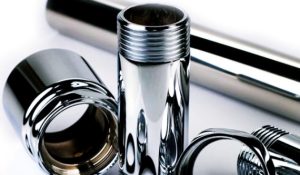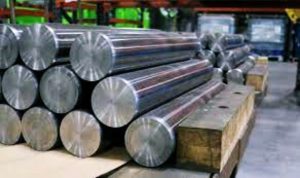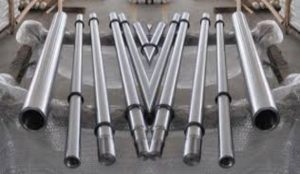![]() Certified ISO 9001:2015
Certified ISO 9001:2015


Hard Chroming
Plating
A thick layer of chromium (typically 20–500 microns) is electroplated onto steel or other metal substrates.
The process is carried out in a chromic acid bath using direct current.
Produces a hard, durable, and corrosion-resistant surface.
Hardness
Extremely hard (800–1000 Vickers hardness, harder than most steels).
Excellent resistance to wear, abrasion, and galling.
Low Friction
Reduces friction between moving parts.
Improves performance in sliding/rotating components.
Corrosion Resistance
Protects metal from rust, oxidation, and chemical attack.
Restoration
Can restore worn or undersized parts to original dimensions.
Hard chroming is widely used in industries where parts undergo high wear, high pressure, or corrosive environments:
Hydraulic cylinders, piston rods, and rams
Engine components (crankshafts, camshafts, valve stems)
Molds and dies for plastics and metal forming
Aerospace parts (landing gear, actuators)
Printing rollers, textile machinery, mining equipment
